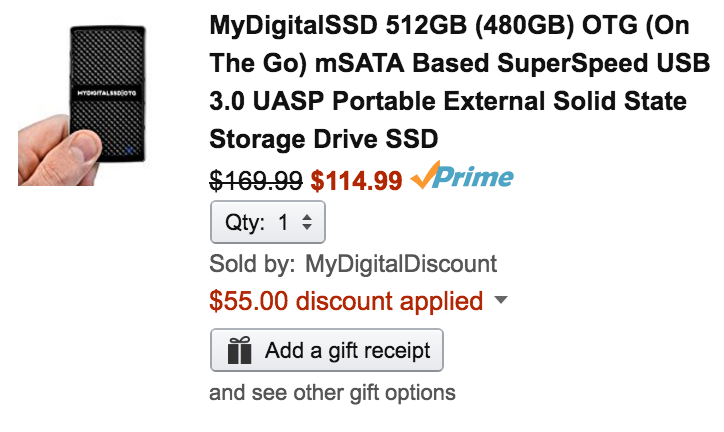You can store and run applications in the non-standard /Application location on OS X, which means you can keep things on your external drive and run them from there. You just have to be aware of the limitations of doing it this way: The applications and data on the drive won't be available when it's not connected. Restore from the Trash Bin. The first place to look for deleted files on a Mac machine is the Trash. This is for those running out of space on their Macs and wanting to save their user data - Saves/Tray/Mods etc. to an external drive. By following this workaround your entire Electronic Arts folder will be stored and updated on the external drive although your game will think it is being stored locally on.
- Mac External Hard Drive On Windows 10
- Mac External Hard Drive Format
- Run Programs From External Hard Drive Macos
- Run Programs From External Hard Drive Mac Os
Quake live on mac. At a recent conference for Mac® IT admins, I was asked, 'Can you run a VM from an external drive?'
Short answer: 'Yes, absolutely. I do this all the time.'

Longer answer: You have always been able to run a Parallels Desktop® for Mac virtual machine from an external drive. In Parallels Desktop 13, this performance has been significantly improved, if your external drive is an SSD drive connected to your Mac by Thunderbolt.
So that you can see what it's like to run a VM from an external drive, I made a short video. (See video 1). I have deliberately not changed the video playback speed, or deleted any portion of it, in order for you to get an accurate 'feel' of the VM's performance.
Video 1: Running a Windows 10 VM from an external drive
While this is subjective, I think you'll agree that this VM's performance looks the same as a VM on the Mac internal storage. For the definitive word on virtual machine performance on a Mac, see this comprehensive MacTech report.
As you can see in the video (at 00:22), Parallels Desktop does alert you when you boot up a VM stored on an external drive. This is so you do not inadvertently disconnect the external drive while the VM is running. (See figure 1.)
Mac External Hard Drive On Windows 10
Here are the details about the setup for this video:
Parallels Desktop 13.2.0
Touch Bar™ MacBook Pro® with 16 GB RAM running High Sierra 10.13.1 (with all patches)
External Drive: SSD2go PKT (1 TB, with USB-C connection)
Windows 10 Fall Creators Update (version 1709) with all patches
Microsoft Office 2016 Version 1710 (Build 8625.2127) with all patches
Microsoft Edge 41.16299.15.0
The easiest way to build a VM that can be used on an external drive is to create that VM in your shared VM folder. Then just move the VM's pvm file to the external drive, as detailed in this Knowledge Base (KB) article, How to run a virtual machine from network or external mass storage. (If you want to move a VM from your personal VM folder to an external drive, you may need to adjust the VM's permissions as detailed in the KB article, How to share virtual machine with several user accounts on a Mac.)
Mac External Hard Drive Format
I hope this helps you manage the limited storage on your Mac, since you can move an infrequently used VM to an external drive and still use it without a noticeable performance penalty.
Run Programs From External Hard Drive Macos
Let us know in the comments if you store some VMs on an external drive and what your experiences have been.
Run Programs From External Hard Drive Mac Os
If you want to try running a VM from an external drive with Parallels Desktop 13, feel free to get started with our free, full-featured 14-day trial.
